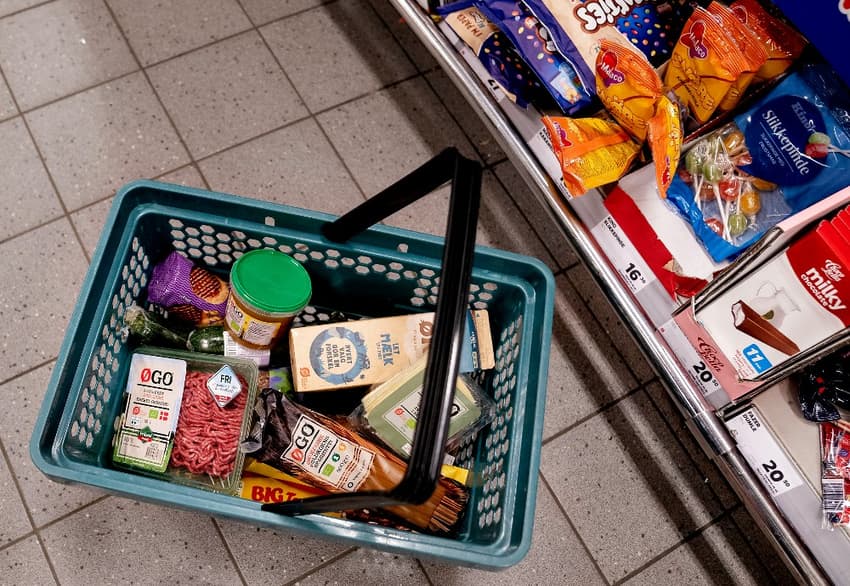Why prices in Denmark could still increase despite falling inflation

Around half of retail businesses in Denmark say they expect their prices to go up within the next three months.
Although inflation has fallen in each of the last three months in Denmark, half of the country’s retail businesses say they expect to put their prices up in the coming three months according to a report by news wire Ritzau.
Some 54 percent of retailers, excluding car dealerships, said they expect prices to go up according to data published by Statistics Denmark.
Around 43 percent said they expect prices to be “around the same as current levels”, while just 3 percent said they would go down.
Retail businesses are defined as those who sell directly to consumers and not to other businesses.
There are also signs that retailers are selling from their stocks rather than tying up capital in new stock, Ritzau writes. Around half of retailers told Statistics Denmark in January that their stocks were too full, but that proportion fell to a quarter in February.
“We can see that things are going a little better for retail. They have become a little less pessimistic, including not thinking their stocks are too large. And there are several of them who think they can put prices up,” Danske Bank senior economist Louise Aggerstrøm Hansen told Ritzau.
“When there are several who feel they can put prices up, that’s probably what they’ll do. And then we won’t quite get this inflation problem under control,” she said.
“It’s certainly positive because we’re talking about businesses which are doing better and are less at risk of closing. But we are in a situation where it is getting harder to control inflation,” she said.
Declining inflation in recent months is mainly related to a fall in energy prices. Economists tend to look at inflation measures which exclude energy and food prices as a way of assessing the extent to which inflation has taken hold in other areas of the economy.
This measure of inflation excluding energy and food, “core inflation” or kerneinflation, was lower than the overall inflation level – around 6 percent compared to 10 percent – in the autumn, when the latter measure peaked.
However, core inflation has continued to rise while the overall, energy-driven inflation rate has since started declining. That is a sign that end prices for consumers could remain high in the shorter term, even if energy bills are lower than they were in 2022.
“It’s a little paradoxical. Because if things aren’t going badly enough, we won’t get inflation under control. So central banks will have to raise interest again to make things go worse,” Hansen said.
Comments
See Also
Although inflation has fallen in each of the last three months in Denmark, half of the country’s retail businesses say they expect to put their prices up in the coming three months according to a report by news wire Ritzau.
Some 54 percent of retailers, excluding car dealerships, said they expect prices to go up according to data published by Statistics Denmark.
Around 43 percent said they expect prices to be “around the same as current levels”, while just 3 percent said they would go down.
Retail businesses are defined as those who sell directly to consumers and not to other businesses.
There are also signs that retailers are selling from their stocks rather than tying up capital in new stock, Ritzau writes. Around half of retailers told Statistics Denmark in January that their stocks were too full, but that proportion fell to a quarter in February.
“We can see that things are going a little better for retail. They have become a little less pessimistic, including not thinking their stocks are too large. And there are several of them who think they can put prices up,” Danske Bank senior economist Louise Aggerstrøm Hansen told Ritzau.
“When there are several who feel they can put prices up, that’s probably what they’ll do. And then we won’t quite get this inflation problem under control,” she said.
“It’s certainly positive because we’re talking about businesses which are doing better and are less at risk of closing. But we are in a situation where it is getting harder to control inflation,” she said.
Declining inflation in recent months is mainly related to a fall in energy prices. Economists tend to look at inflation measures which exclude energy and food prices as a way of assessing the extent to which inflation has taken hold in other areas of the economy.
This measure of inflation excluding energy and food, “core inflation” or kerneinflation, was lower than the overall inflation level – around 6 percent compared to 10 percent – in the autumn, when the latter measure peaked.
However, core inflation has continued to rise while the overall, energy-driven inflation rate has since started declining. That is a sign that end prices for consumers could remain high in the shorter term, even if energy bills are lower than they were in 2022.
“It’s a little paradoxical. Because if things aren’t going badly enough, we won’t get inflation under control. So central banks will have to raise interest again to make things go worse,” Hansen said.
Join the conversation in our comments section below. Share your own views and experience and if you have a question or suggestion for our journalists then email us at [email protected].
Please keep comments civil, constructive and on topic – and make sure to read our terms of use before getting involved.
Please log in here to leave a comment.